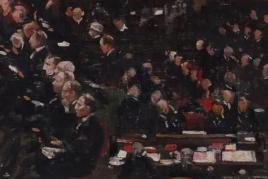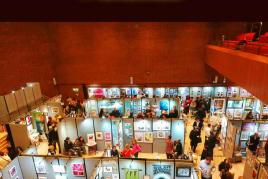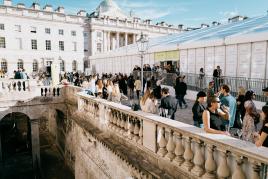Edward Gibbs,…
Orientalist & Middle East Week Totals £15 Million at Sotheby's London
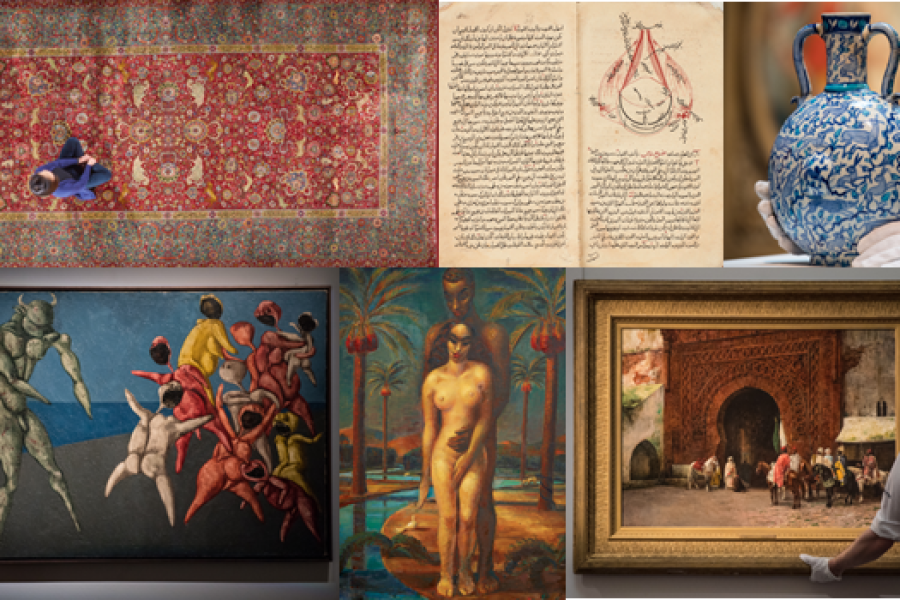 As part of Sotheby’s Orientalist and Middle Eastern Art Week, a group of four sales dedicated to art produced across the Islamic world from ancient to modern times, 280 lots sold to bring £14,998,938 / $20,934,439 (est. £10,402,300-14,893,000) – an increase of 18% from the equivalent season in 2017. - Mit freundlicher Genehmigung von: sothebys.com
As part of Sotheby’s Orientalist and Middle Eastern Art Week, a group of four sales dedicated to art produced across the Islamic world from ancient to modern times, 280 lots sold to bring £14,998,938 / $20,934,439 (est. £10,402,300-14,893,000) – an increase of 18% from the equivalent season in 2017. - Mit freundlicher Genehmigung von: sothebys.comWas: Presse
Wann: 26.04.2018
Edward Gibbs, Sotheby’s Middle East & India Chairman, said: “Following a landmark year for Sotheby’s in the Middle East, our London auctions of Orientalist and Middle Eastern art have continued their upward trajectory, underpinned by the depth of bidding witnessed across the last three days for fresh-to-the-market, exceptionally rare and historically important lots. The truly global appeal of these collecting categories was evident throughout, as we welcomed over 400 participants hailing from 44 countries across the globe. A month after we celebrated the first anniversary of our new gallery in Dubai, we are delighted that the results of this sale series was bolstered by a 44% increase in the number of buyers from the UAE. We look forward to what the rest of the year has to offer, as an ever-increasing audience discovers this area of the market.”
ARTS OF THE ISLAMIC WORLDToday’s Arts of the Islamic World auction explored more than 1,200 years of artwork spanning three continents – covering the vast historical and geographical breadth of art produced under Islamic patronage to bring an above-estimate total of £6,129,875 / $8,557,918 (est. £3,737,500-5,391,000). The top lot of the sale was a unique Iznik blue and white pottery pilgrim flask elegantly adorned with a fantastical mix of animals, which sold for nearly ten times its pre-sale estimate at £669,000 / $933,991 (est. £60,000-80,000). Testament to the breadth of experimentation of Iznik potters, the early decorative piece is the only known example of this distinctive – and ambitious – shape.
Returning to Sotheby’s, where it was last sold in April 1978, a further highlight was an extremely rare Ottoman erotic manuscript, lavishly illustrated with 85 miniatures on vellum and thought to bear within it portraits of its patron. Following an extended bidding battle, the 18th/19th century document brought £561,000 (est. £250,000-350,000).
Of monumental scale and superlative quality, rare examples of cut-mosaic tilework from the Timurid empire of the 14th-15th century from the collection of Mnavzagan Pridonoff sparked intense competition. Each and every one of the five lots offered soared above their pre-sale estimates to bring a combined total of £1,261,500 / $1,761,180 (est. £270,000-390,000). The group was led by a distinctive blue and turquoise panel into which fluid white and ochre calligraphic inscriptions are laid, which brought £513,000 / $716,199 (est. £80,000-120,000).
Exquisite examples of medieval manuscripts abounded, highlighted by an early autograph copy of Al-Farisi's landmark work, the Kitab tanqih al-manazir, which carries a remarkable cross-sectional diagram thought to be the earliest known illustration of the human eye. Of exceptional historical importance, drawing on the work of Greek scholars Euclid, Ptolemy, Aristotle and Galen, the celebrated manuscript sold for £549,000 / $766,459 (est. £250,000-350,000).
A further piece making its auction debut was an exceptional Mamluk silver-inlaid cast brass bowl, emblazoned with elegant inscriptions and organic floral details, which sold for £333,000 / $464,901 (est. £60,000-80,000). Commissioned by a high-ranking officer at the Mamluk court, it was formerly in the collection of Aton Exner, an Austrian publisher who donated a collection of over two thousand works to the Museum of Applied Arts in Vienna in 1948.
20TH CENTURY ART / MIDDLE EASTA vibrant international platform for modern and contemporary arts for Arab, Iranian and Turkish art in London, Sotheby’s 20th Century Art / Middle East auction totalled £2,140,250 / $2,983,509 (est. £1,775,500-2,497,000), with 40% of the works selling for above their pre-sale high estimates. The sale was led by pioneering Egyptian modernist Mahmoud Saïd’s sumptuous depiction of Adam and Eve as two imposing figures within a lush desert oasis. A daring work from 1937 encapsulating the dialogue between Western history of art and the prevailing Egyptian spirit, Adam and Eve made its auction debut at £644,000 / $882,402 (est. £300,000-500,000) – the highest price ever achieved for a nude painting by the artist.
A further highlight was one of the rarest works by icon of Iranian modernism Bahman Mohasses to ever appear at auction. The Minotaur Scares the Good People (1966), a highly-charged representation of the artist’s lifetime grappling with demons of alienation, loneliness and disenfranchisement, soared above estimate to £549,000 / $765,306 (est. £280,000-350,000) – a record for the artist in dollars*. Another of the artist’s minotaurs appeared in the sale, in the form of a sinewy bronze sculpture, bringing £37,500 / $52,275 (est. £20,000-30,000). Star of the first museum dedicated to a solo female artist in Iran, the inimitable Monir Farmanfarmaian also shone in the saleroom, as her monumental mirror-mosaic Recollections I (2008) sold for £237,000 / $330,378 (est. £160,000-200,000).
The auction saw further records for Egyptian painter and feminist activist Inji Efflatoun, whose 1962 portrait of a detainee sold for £68,750 / $95,838 (est. £15,000-25,000), Saudi artist Maha Malluh, with Food for Thought, Assabeel (2012) at £32,500 / $45,305 (est. £28,000-35,000) and Contemporary Lebanese artist Ziad Antar at £7,500 / $10,420 (est. £6,000-8,000), as well as benchmarks for Salah Yousri and Farshid Maleki.
Three works by Syrian artist Louai Kayali were offered from the collection of the late Ms. Pearl A. Baker, a diplomat and world traveller who met with the artist in Damascus – selling for a combined total of £68,750 / $95,838 (est. £34,000-51,000), led by a tender portrait of the artist’s ten-year-old niece.
THE ORIENTALIST SALEAn annual event, The Orientalist Sale totalled £5,175,750 / $7,214,996, against a pre-sale estimate of £3,535,000-5,124,000. Bringing together paintings and sculpture representing the landscapes, people, and customs of North Africa, Egypt, the Levant, Arabia, and the Ottoman world during the 19th and early 20th centuries, the auction was led by Edwin Lord Weeks’ Rabat (The Red Gate), a monumental view of the inner gate of the Kasbah of Oudaïas. Painted in 1879 during the artist’s third trip to Morocco, the work more than tripled its estimate, selling for £573,000 / $798,762 (est. £200,000-300,000).
A selection of paintings and watercolours from a distinguished private collector was highlighted by Paul Joanowits’ Bashi-bazouks before a Gateway, depicting two Ottoman army soldiers in all their regalia, which flew above estimate to £465,000 / $648,210 (est. £100,000-150,000) – establishing a new record for the artist at auction. A further auction record was established by Raphael von Ambros with The Baker's Shop, Cairo, at £162,500 / $226,525 (est. £100,000-150,000).
Strong prices were achieved for rediscovered works. The sale opened with Stringing Pearls by Theodoros Ralli, an exquisite painting perfectly capturing the artist’s exceptional skill at depicting intimate scenes of daily life in Egypt. One of the most exquisite examples by Ralli to appear on the market in recent years, the finely detailed image of a Nubian man dressed in yellow silk carefully strings white teardrop pearls into a necklace drew multiple bids, selling for £273,000 / $380,562 (est. £80,000-120,000) – the highest price for a work by the artist at auction since 2010. A watercolour by Anders Zorn, depicting Women outside the Sidi Abderrahman Mosque, Algiers, sold for £309,000 / $430,746, and Jean-Léon Gérôme’s A Sultan at Prayer made £297,000 / $414,018 (£200,000-300,000).
An Ottoman Beauty by Italian artist Cesare dell’Acqua – a work exemplifying nineteenth-century French taste for Orientalism and turqueries – soared over estimate to reach £405,000 / $564,570 (est. £60,000-80,000).
RUGS & CARPETSComprising a treasure trove of exceptional collector and decorator pieces spanning Persia, India, Central Asia, Anatolia, Turkey and Europe, Sotheby’s sale of exquisite Rugs & Carpets totalled £1,553,063 / $2,178,016 (est. £1,354,300-1,881,000).
The auction was led by the largest Toussounian silk carpet ever to appear at auction, which soared above estimate to £393,000 / $551,143 (est. £200,000-300,000) – setting a world record for any 20th century carpet at auction. The design elements of this ‘Emperor’ silk carpet take from one of the most complex and sophisticated groups of classical carpets of the early Safavid period in the 16th century, adorned with colourful palmettes, cloud-bands, mythical animals and delicate layers of spiralling vines.
Following a successful auction in November, the second group of rare and early weavings from the renowned collection of the celebrated architect and author Christopher Alexander performed well – led by a West Anatolian rug fragment, thought to be from the Gördes region, at £81,250 / $113,945 (est. £8,000-12,000).
The sale saw also strong competition for a strikingly fragmented Karapinar carpet, crafted in the second half of the 16th century in Central Anatolia, which more than doubled its estimate to bring £131,250 / $184,065 (est. £40,000-60,000).
 Bahman Mohasses, Il Minotauro fa Paura alla Gente per Bene, oil on canvas (est. £280,000-350,000) - Mit freundlicher Genehmigung von: sothebys.com / Sotheby’s Auktionshaus
Bahman Mohasses, Il Minotauro fa Paura alla Gente per Bene, oil on canvas (est. £280,000-350,000) - Mit freundlicher Genehmigung von: sothebys.com / Sotheby’s Auktionshaus 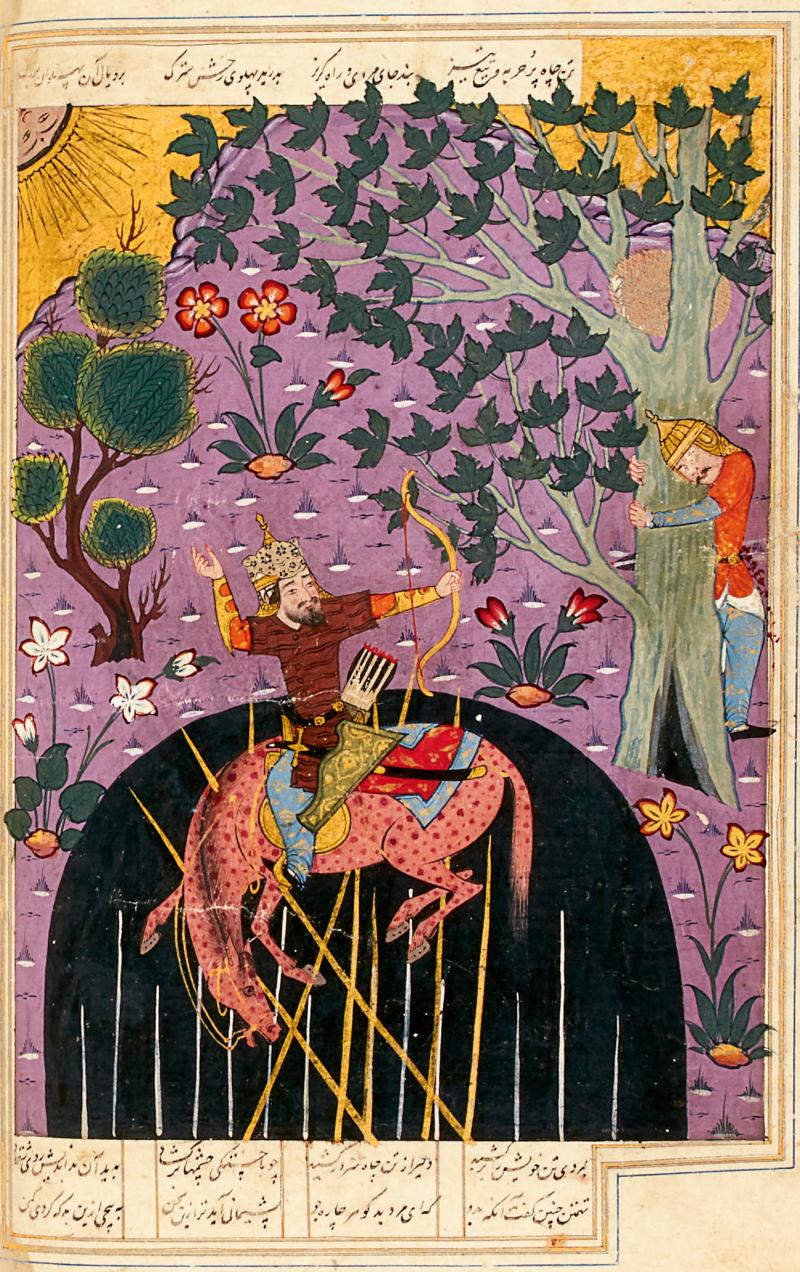 Lot 11, An illuminated Qur’an juz (XXX), attributable to the scribe ‘Ali ibn Muhammad al-Muktib al-Ashrafi, probably illuminated by Ibrahim al-Amidi, Egypt, Mamluk, circa 1370-75 AD (est. £80,000-120,000) - Mit freundlicher Genehmigung von: sothebys.com / Sotheby’s Auktionshaus
Lot 11, An illuminated Qur’an juz (XXX), attributable to the scribe ‘Ali ibn Muhammad al-Muktib al-Ashrafi, probably illuminated by Ibrahim al-Amidi, Egypt, Mamluk, circa 1370-75 AD (est. £80,000-120,000) - Mit freundlicher Genehmigung von: sothebys.com / Sotheby’s Auktionshaus  Lot 105, Ottoman Turkish manuscript ‘A Shaykh remembers his youth’, est. £250,000-350,000 - Mit freundlicher Genehmigung von: sothebys.com / Sotheby’s Auktionshaus
Lot 105, Ottoman Turkish manuscript ‘A Shaykh remembers his youth’, est. £250,000-350,000 - Mit freundlicher Genehmigung von: sothebys.com / Sotheby’s Auktionshaus.
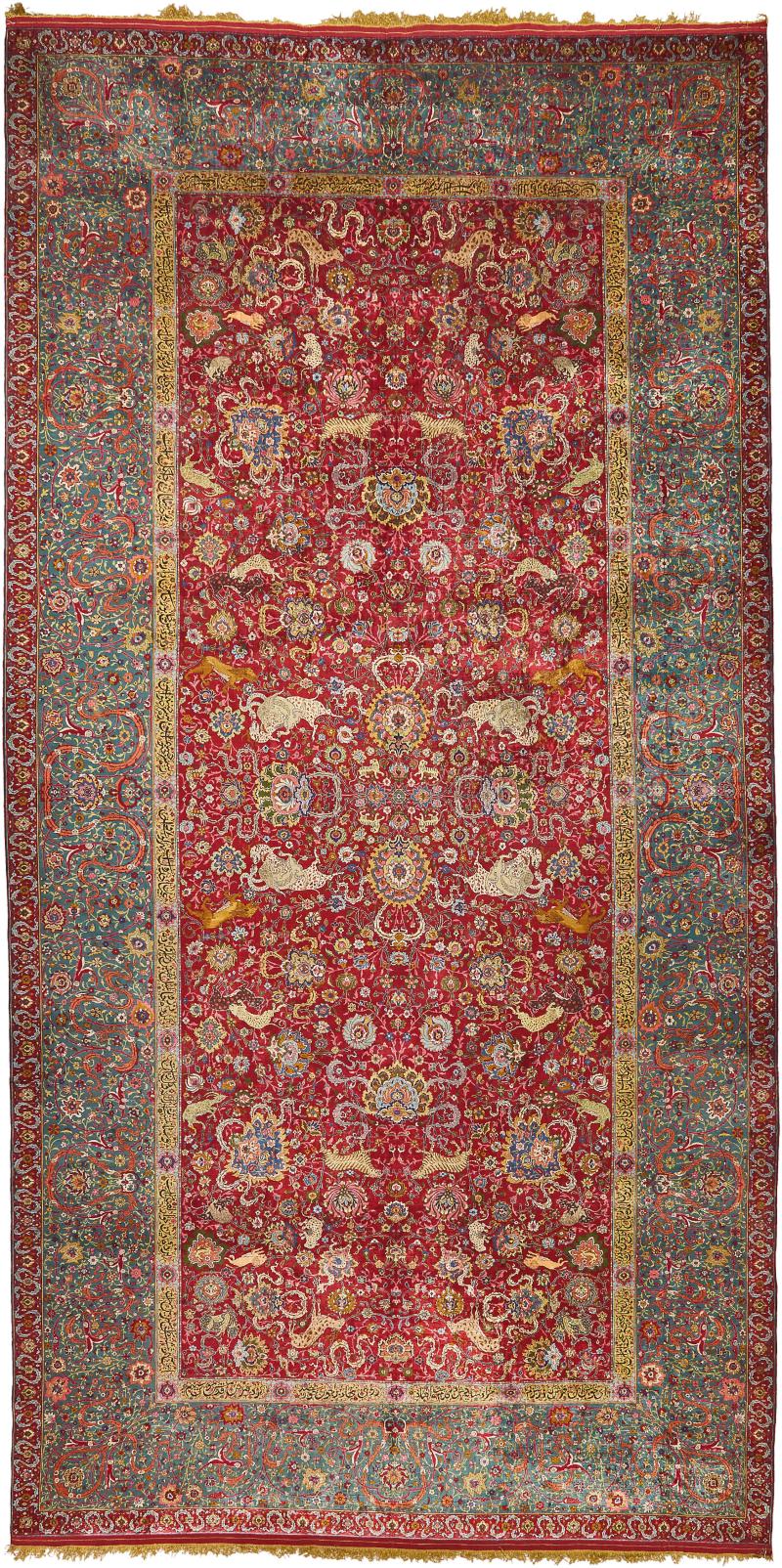 'Emperor' silk carpet, Kum Kapi, Istanbul, Turkey (est. £200,000 — 300,000) - Mit freundlicher Genehmigung von: sothebys.com / Sotheby’s Auktionshaus
'Emperor' silk carpet, Kum Kapi, Istanbul, Turkey (est. £200,000 — 300,000) - Mit freundlicher Genehmigung von: sothebys.com / Sotheby’s Auktionshaus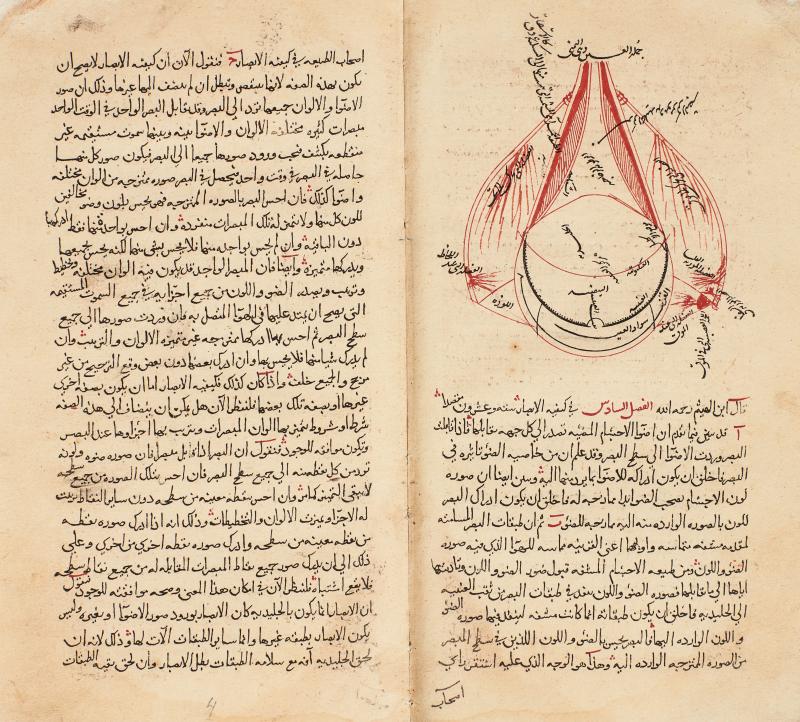 Lot 32, The Book of Correction of Optics for those who have Sight and Mind, est. £250,000-350,000 - Mit freundlicher Genehmigung von: sothebys.com / Sotheby’s Auktionshaus
Lot 32, The Book of Correction of Optics for those who have Sight and Mind, est. £250,000-350,000 - Mit freundlicher Genehmigung von: sothebys.com / Sotheby’s Auktionshaus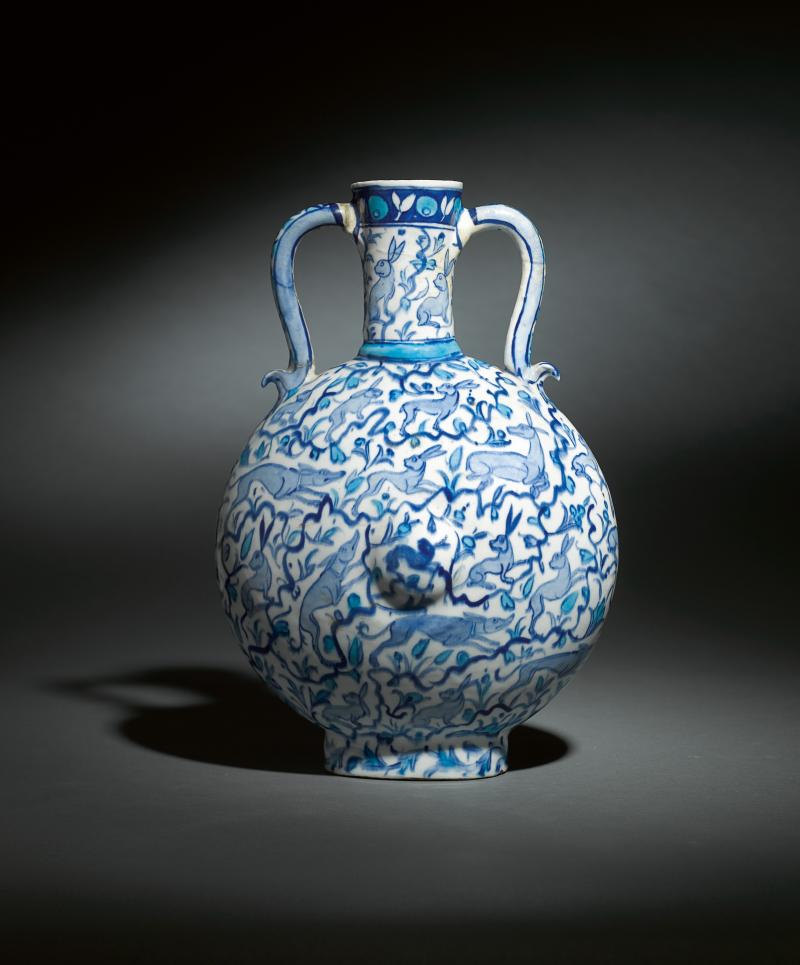 Lot 167, A unique Iznik blue and white pilgrim flask with animals, Turkey, circa 1545-55 (est. £60,000-80,000) - Mit freundlicher Genehmigung von: sothebys.com / Sotheby’s Auktionshaus
Lot 167, A unique Iznik blue and white pilgrim flask with animals, Turkey, circa 1545-55 (est. £60,000-80,000) - Mit freundlicher Genehmigung von: sothebys.com / Sotheby’s AuktionshausCopyright © 2024 findART.cc - All rights reserved

